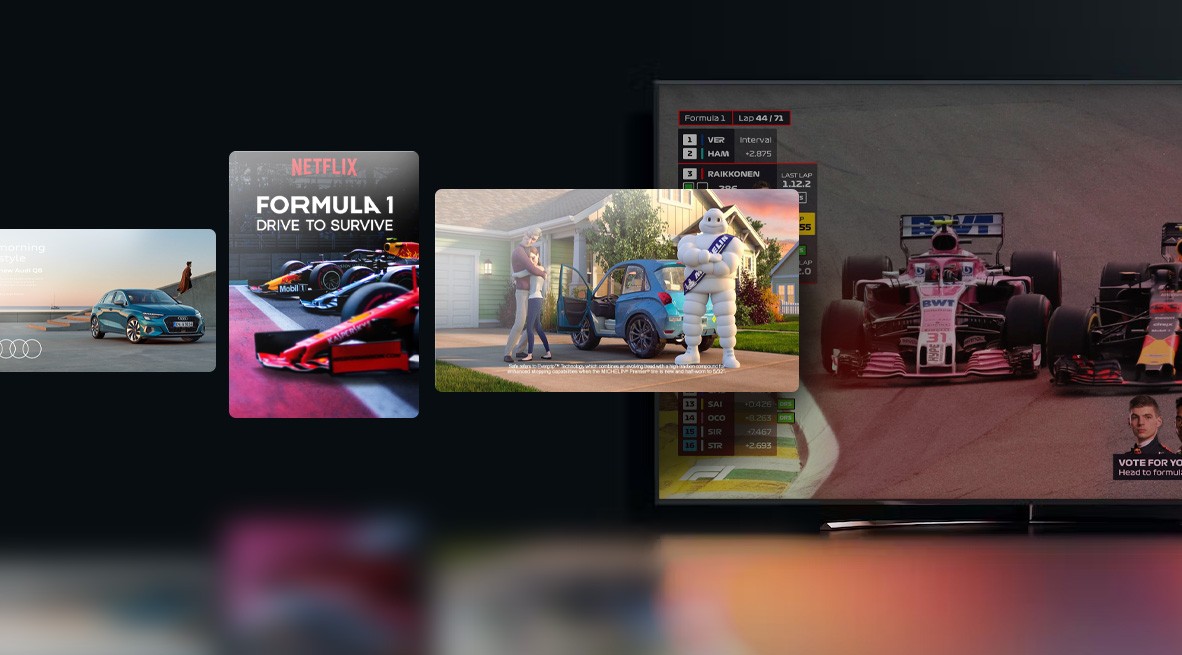Those who own the data rule the world. Comcast voluntarily made advertisers’ lives easier by unveiling some statistically powered facts and predictions around viewers’ behaviors, wants, and needs.
You might want to ask, “What are they for?”
That’s what we at Oxagile call “data is power.” Being well aware of what’s going on in the minds of casual TV and streaming viewers, advertising experts are free to build their ad strategies fueled by real preferences rather than unproven or erroneous assumptions. So, what’s the future of TV and video advertising?
Linear TV isn’t going to vanish abruptly
What’s the point?
The truth is that convergent TV is no longer a buzzword. Both digital and linear TV paths are equally vital to follow to reach the maximum number of viewers. Traditional broadcast TV is inevitably undergoing certain transformations (and this is not a one-time process) to keep up with digital channels, but there’s no mention of linear TV’s total disappearance. So, while publishers are actively unifying their supplies to stay ahead of the game called “Reaching a wider audience”, advertisers shouldn’t be too dubious about what to do in terms of collaboration with sellers.
How should advertisers behave?
If you’re going to neglect linear sources by focusing solely on those video providers who rely on digital streaming channels only, you’re likely to be on the wrong track. The tendency to maneuver between linear and streaming, while respecting either option, can become a double effective bait to hunt out viewers on either side.

Standalone subscriptions are no longer working
What does that mean?
Having several streaming subscriptions has become the new norm for households so far, especially in the US, but there’s a snag. Such a multi-subscription approach contradicts a soaring tendency to save their pocket. Publishers, in turn, are up to every move in the game, generating bundled subscription packages. For a video streaming service consumer, this means mind-blowing cost savings, but what about advertisers?
What should the advertisers’ move be?
Just like in the case of the previous prediction, there is a need for advertisers to chase those media providers possessing ad inventory across linear and streaming channels and representing a rich content portfolio that is particularly appealing to consumers. This gives buyers a perfect chance to evoke a response from their target audiences by touching them via multiple channels and content offerings.
Contextual targeting gets its second wind due to privacy regulation shifts
What is it about?
Third-party cookies are phased out, which makes all cookie-powered ad strategies obsolete and fruitless. To adapt to a new reality, good old methods come in handy, and contextual targeting is no exception.
Publishers seem to be in a privileged position, having a firsthand understanding of their content. And advertisers?
Does contextual targeting work for advertisers?
As one of the scenarios for winning their core audiences with well-directed messages, yes, it does, especially if the advertisers are in the context of the content provided by publishers. But contextual ads are not a panacea, therefore, reliance on first-party data appears to be the case.
The advice here can be as follows: deal with the parties using privacy-first data enablement platforms. This will help continue with behavioral targeting tactics that have been tried and tested for years.

You’re not alone: Collaboration will enrich outcomes and foster innovation
More details?
“Two heads are better than one” is not rocket science, right? As innovations are a way to compel clients’ attention, they should supercharge all ad ecosystem components, including cross-screen measurement, viewing experiences, and AdTech supply chains.
By the example of TV ad measurement, both buyers and sellers are searching for new discoveries in this field. Why not join forces, then?
What are the possible steps ahead?
Working in tandem for the sake of a common goal is always rewarding. A standardized ecosystem is only possible when advertisers and publishers act together, not in isolation, thus forming a transparent environment for knowledge sharing.
As for the real-life example, sellers are now seeking every opportunity to interact with newly emerging measurement providers to stay abreast of all measurement novelties. Advertisers shouldn’t stay on the sidelines — hands-on interaction is key to navigating and flourishing in a lightning-fast changing ad world.

Sustainability goes a long way. No, you’ve heard us alright
Some words about it
What do sustainability and multiscreen advertising have in common at all? It’s a sound question, and the tendency is that sustainability is not merely a trend or a “nice-to-consider” thing, but an obligatory RFP clause.
How to shift to a business context here?
Whether it’s about partnerships between ad ecosystem players or steps for acquiring new clientele, every single business action should be evaluated from the perspective of its favorable impact on Earth. Working on reducing carbon emissions is the responsibility of all industries and parties, without exception.
Processing power-decreasing campaigns are effectively implemented right away. Among the examples are the development of carbon calculators for ad agencies, so they can stay in the loop of their campaigns’ carbon footprint, or the shift of data companies towards the direct integration with DSPs or DMPs to reduce the number of intermediaries.
It’s worthwhile keeping in mind the meaningful effect of investments in the environment. The more advertisers pay heed to sustainability and deliver value to all parties involved in business (clients, partners, and staff), the more they focus on their own growth and prosperity.
Want to never miss a thing?
These are just a few brief predictions and some actionable advice for modern advertisers, so they can narrow down quite a blurred picture of what keynotes to address to maximize their reach and make a bigger impact on their target audience.
If you feel that you’re ready for more insights to uncover, our AdTech team is happy to reach out anytime you want and talk about the potential clues for streamlining your business results aligning them with the future trends of digital advertising.

























